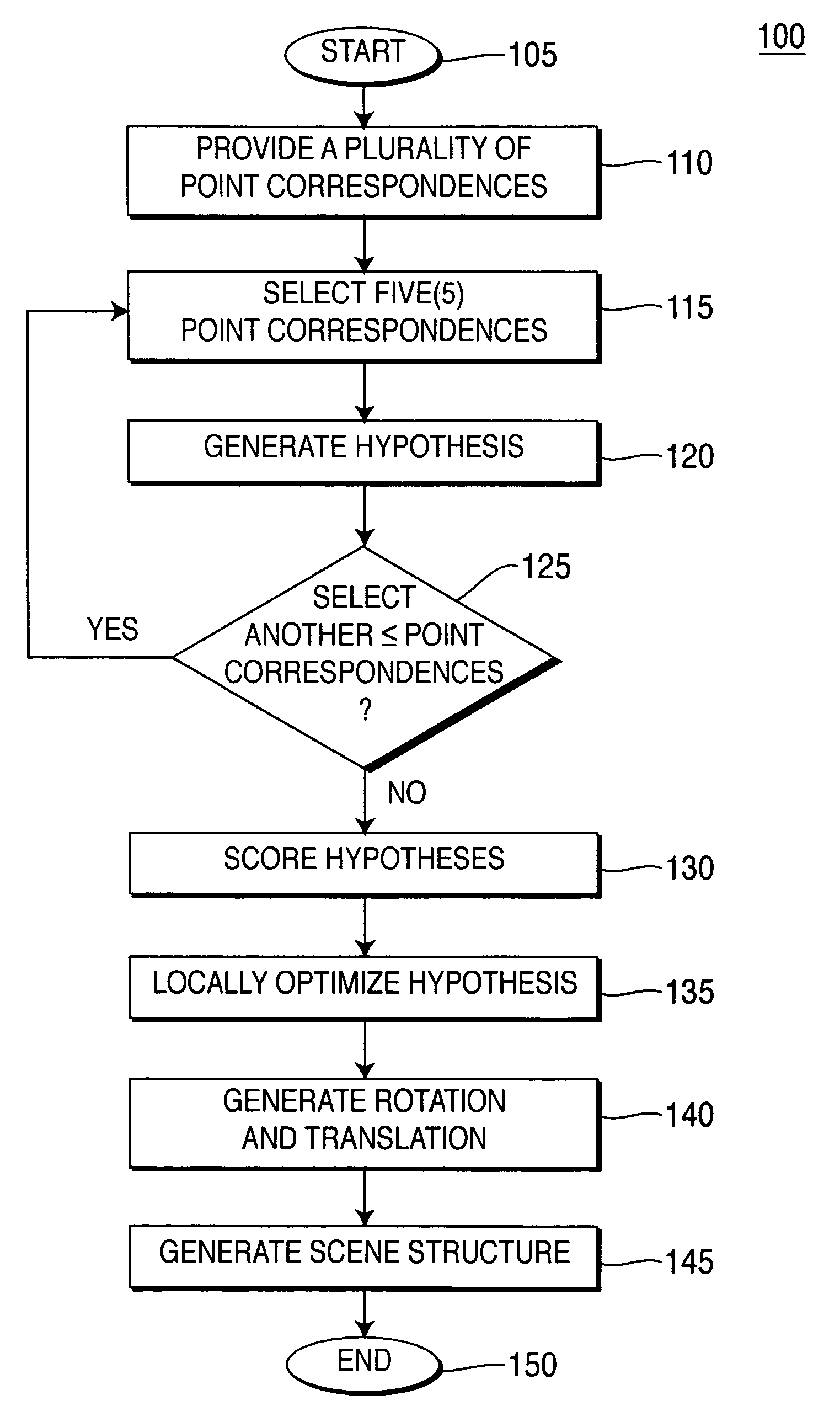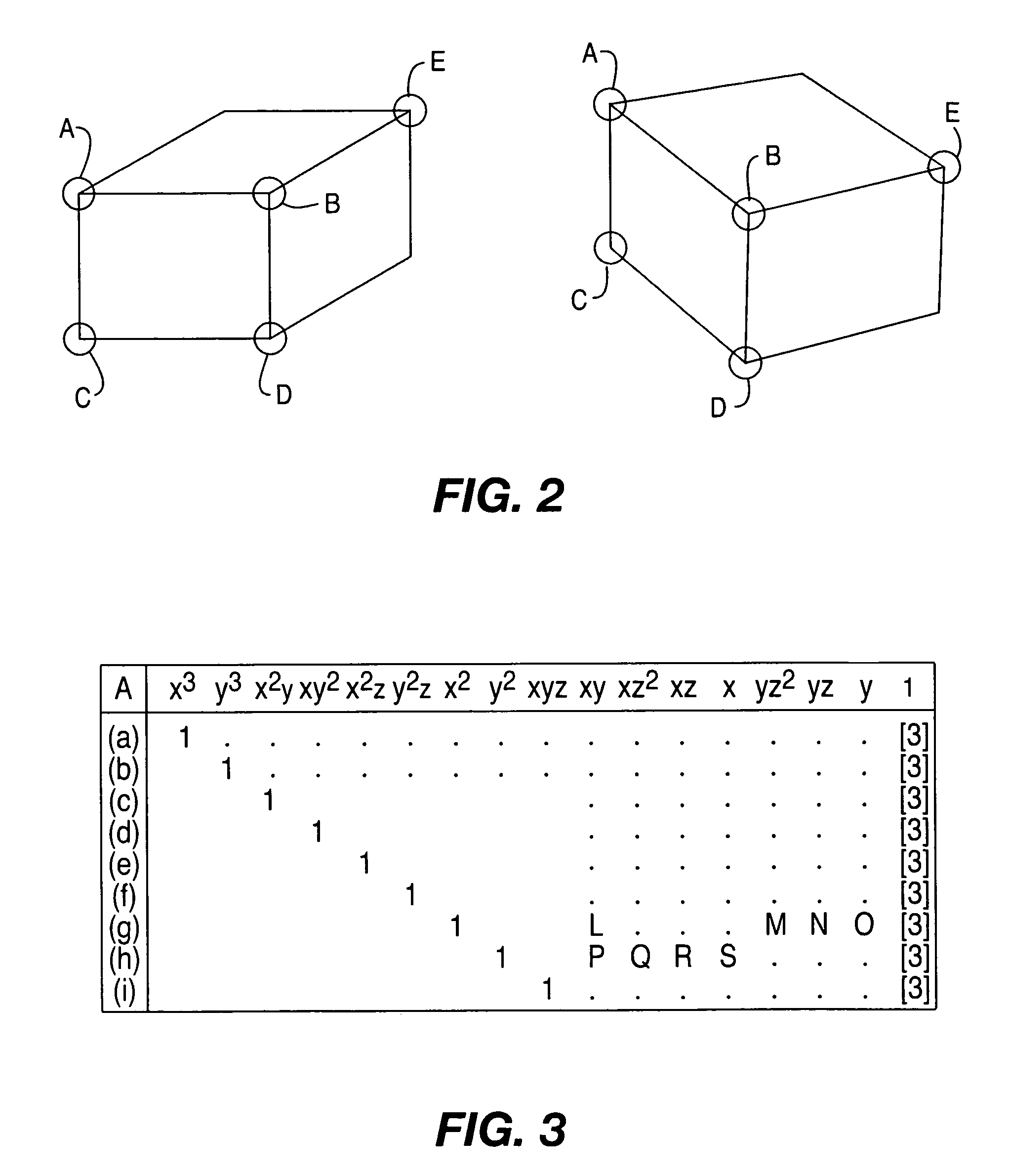Method and apparatus for determining camera pose from point correspondences
a technology of camera pose and correspondence, applied in the field of method and apparatus for determining camera pose from point correspondence, can solve the problem that uncalibrated methods are often failures, and achieve the effect of reducing the cost function
- Summary
- Abstract
- Description
- Claims
- Application Information
AI Technical Summary
Benefits of technology
Problems solved by technology
Method used
Image
Examples
Embodiment Construction
[0020]FIG. 1 illustrates a flowchart of a method 100 for generating solutions to camera motion and scene structure from a plurality of images. FIG. 1 illustrates the present invention in broad steps, where each step will be further disclosed below. Method 100 starts in step 105 and proceeds to step 110.
[0021]In step 110, a plurality of point correspondences are provided between at least two images. In other words, pairs of image points within a scene are identified between two images of the same scene. For example, FIG. 2 illustrates an example of a set of 5 point correspondences of a scene. If two images showing a scene containing a wooden crate that is taken from two different camera views, then corresponding corners A-E of the wooded crates are considered a set of 5 point correspondences of a scene. Of course, this scene contains many point correspondences that are not specifically labeled. In practice, the point correspondences can be identified using an automatic feature matche...
PUM
 Login to View More
Login to View More Abstract
Description
Claims
Application Information
 Login to View More
Login to View More - R&D
- Intellectual Property
- Life Sciences
- Materials
- Tech Scout
- Unparalleled Data Quality
- Higher Quality Content
- 60% Fewer Hallucinations
Browse by: Latest US Patents, China's latest patents, Technical Efficacy Thesaurus, Application Domain, Technology Topic, Popular Technical Reports.
© 2025 PatSnap. All rights reserved.Legal|Privacy policy|Modern Slavery Act Transparency Statement|Sitemap|About US| Contact US: help@patsnap.com



